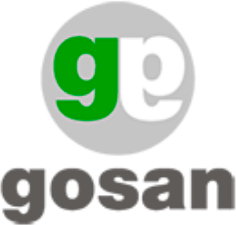.jpg)
Types of sheaves in their different applications
The characteristics of a sheave are closely linked to the market to which it is aimed. Each sector of activity has technical demands that determine the design, materials, size and manufacturing processes of the sheaves. Furthermore, there are specific regulations that such mechanical components must fulfil in accordance with the environment in which they are going to be used. When it comes to determining the configuration and design of the sheaves, the most important thing to bear in mind is the target sector.
Sheaves for the Oil & Gas market
These sectors are particularly restrictive and have specific regulations, including API 8C Certification. Sheaves for use in the Oil & Gas sector are subject to the most demanding and stringent quality controls, including tests established by international standards, as well as destructive and non-destructive testing of materials and welds.
The tests to be performed will differ according to where these industrial components are located, since demands in terms of temperature may vary significantly depending on the geographic location. Mechanical characteristics as resilience or tensile and yield strength will not be the same for a plant located in the North Sea as one in the Gulf of Mexico, for example. For this reason, properties in terms of hardness, load testing, balancing and treatments must fulfil the specific needs of each project.
Sheaves for offshore environments
As in the Oil & Gas market, the marine and offshore sector is particularly demanding in terms of quality. Sheaves must comply with the certification standards for the ship or platform where they are installed and they must be approved by external inspectors or Third Parties. The controls performed consider the entire manufacturing process, from the supply of raw materials and their traceability to the inspection of the end product and load testing.
Such environments may require the sheaves to be used under water, so it is necessary to take water tightness, pressure resistance and surface protection by means of specific coatings into account.
Sheaves for ports and shipyards
The main characteristic that this component must fulfil for its use in the port sector is groove hardness, as it must withstand very high speeds. In such environments, mechanical components that are not sufficiently resistant will be subject to accelerated wear.
Sheaves used in ports and shipyards have a standardised bearing, which are cylindrical roller bearings in most cases. These environments are highly corrosive and therefore bearings must have the necessary protection to prevent premature corrosion.
The most commonly mounted bearings on sheaves which work in ports and shipyards is the cylindrical roller bearing. As these environments are highly corrosive, the bearings as well as the sheaves have to count with a special protection to prevent premature corrosion.

Sheaves for mining and industry
These environments are not so demanding in terms of load criteria but they are characterised by extreme temperatures and a particularly adverse ambience.
For this reason, choosing the appropriate shaft/bearing housing configuration is essential to guaranty protection against dust and allow a correct lubrication.
Sheaves for construction and mobile cranes
Lifting and transport machinery for use in the construction sector generally have lower operating hours. Solutions may be extremely diverse and are adapted to the specifications of each project, so their main feature is flexibility in their design characteristics.
.jpg?width=1080&name=Square%201+3%20(2).jpg)
Fabricated – welded sheaves
Constructive solutions based on welded components enable the manufacturer to easily adapt to the demands of each particular application. The main advantage of mechanically welded processes lies in a greater flexibility to address the specific requirements of each project, as the product can be customised in accordance with needs.
These sheaves consist of three components in laminated or forged steel which are welded together and then machined and finished to the requested dimensions. This way, the final product is customized according to each particular design, in terms of radius, groove angle, pitch diameter, strict dimensional tolerances for runout and warping, hardness and type of the rope, among other variables. Different hubs configurations are also available, including bushings, roller/tapered bearings, covers, etc.
Another remarkable advantage of the fabricated dual web welded sheaves is the weight reduction, which results in the application withstanding heavier work loads, allowing for higher fleet angles and a better stress distribution.
As opposed to production based on casts which has a high maintenance cost and extremely limited versatility, this manufacturing process results in highly competitive production costs in both long and short series as well as an optimised design for each application.

.jpg?width=760&name=Square%201+3%20(1).jpg)
